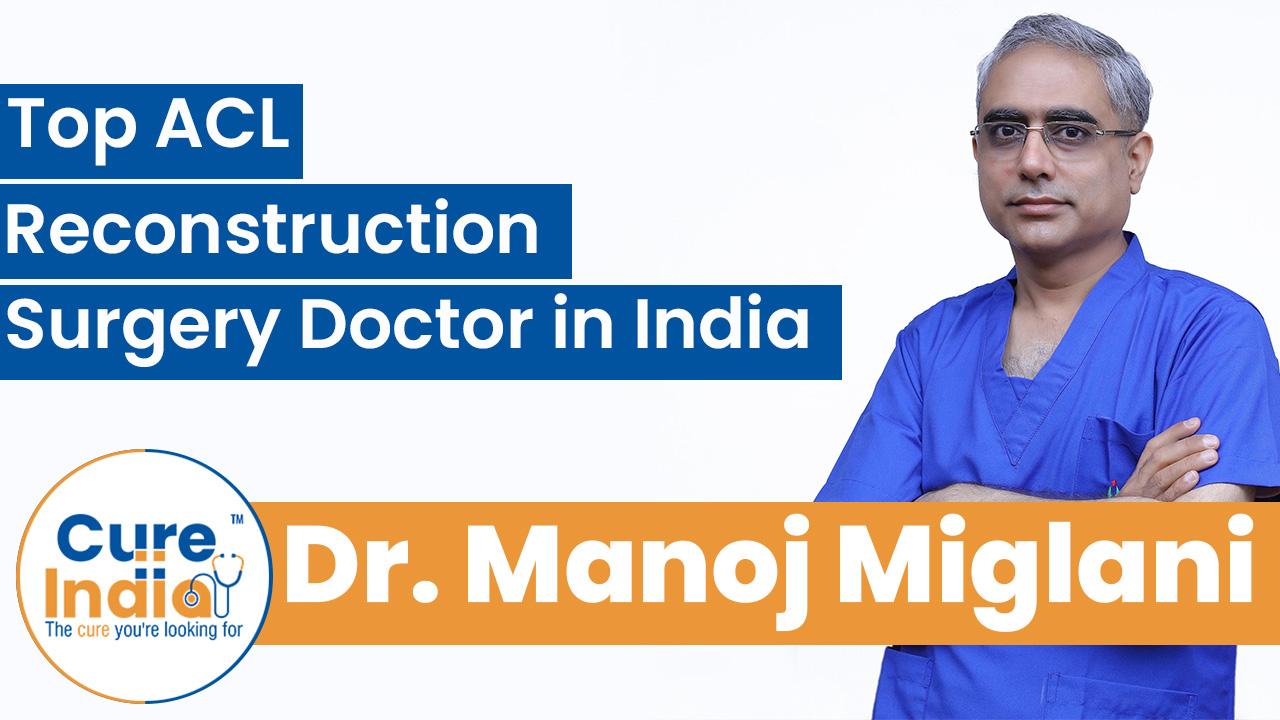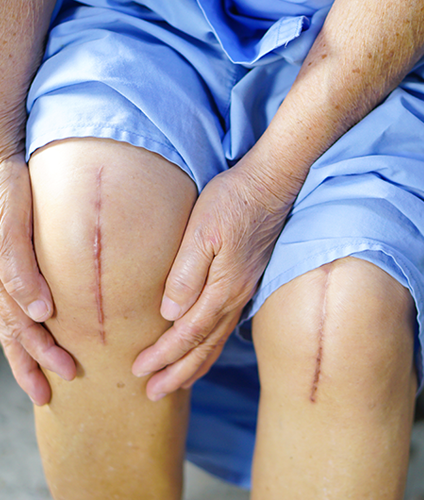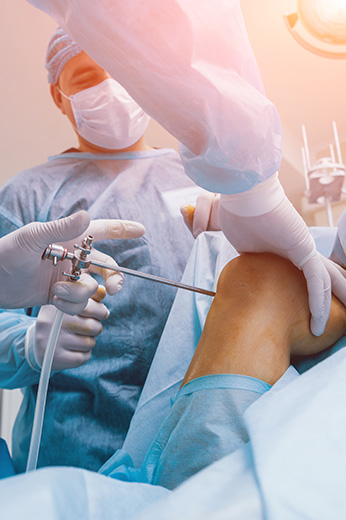

The ACL is the middle part of the knee where the shinbone and thighbone connect. The function of the ACL is to prevent the shin bone from sliding out in front of the thigh bone. When there is a sudden twisting or turning force applied to the knees, the ACL ligament stretches and often forms a tear. Now this can be caused when a person falls and lands on their knees. This type of injury is common among people who play a lot of sports. An ACL injury can cause pain and swelling and lead to instability of the knee joint. An ACL reconstruction surgery in India is required to repair this injury and to restore the normal function and stability of the knee joint.
Every year, a lot of people with ACL injuries are visiting India from different African countries, including Kenya, Congo, Zambia, and Rwanda for ACL tear operations. By receiving the ACL reconstruction procedure in India, the patients are able to regain the full function of their knees and also able to get back to their favourite sports. With the expertise of highly experienced ACL orthopaedic surgeons in India, the patients receive precise and international-quality ACL surgery. The success rate of ACL ligament reconstruction surgery in India is 99%, with patients returning to their country with improved knee movement and range of motion.
ACL ligament reconstruction surgery is a surgical treatment used to treat ACL ligament injury. However, not all ACL injuries need anterior cruciate reconstruction. Here, we will briefly discuss the reasons to go for an CL reconstruction surgery-

■ Sudden knee movement - Sudden knee movement can cause ACL tears, such as moving the knee suddenly from side to side, backwards, twisting, etc.
■ ACL sports injury - The cause of ACL tear that leads to ACL reconstruction is primarily sports injuries. In most cases, ACL or anterior cruciate ligament injury occurs during sports. Games that are commonly associated with ACL injury are Basketball, soccer, football, skiing, etc.
■ Accidents - Accidents such as car or motor accidents can also cause ACL to tear or damage. This type of ACL injury, also known as trauma in severe cases, can also injure other ligaments of the knee.
■ Falling - Sudden falling on the knee can also cause ACL injury that requires ACL reconstruction.
■ Direct hit on the knee - Sudden and high-intensity hits directly on the knee can also damage the ACL with other ligaments that may require ACL reconstruction.
The signs and symptoms of an ACL injury are very simple and noticeable. The knee joint is a complex structure that comprises bones, tendons, ligaments, and other surrounding tissues that work together and make the knee functional. It is important to get the proper diagnosis if you are having the following symptoms.
Arthroscopic ACL reconstruction surgery in India is a minimally invasive surgery procedure that helps to treat or repair ACL ligament tear and restore the usual functionality of the knee. Arthroscopic ACL reconstruction is itself a type of ACL repair surgery that uses a device called arthroscopic to perform the procedure. Arthroscopic ACL repair surgery can be performed in two ways-

1. Autograft - In autograft, arthroscopic ACL reconstruction surgery in India is performed using the tissue from the patient’s body to repair the ACL ligament.
2. Allograft - In allograft arthroscopic ACL graft reconstruction, the tissue is collected from a donor instead of taken from the patient's body.
There are several non-surgical alternatives available to treat mild cases of ACL injury. Arthroscopic ACL ligament reconstruction surgery is mostly preserved for only severe cases where the ACL ligament is completely torn along with another ligament. Here are some common non-surgical alternatives to an ACL reconstruction surgery in India-
■ RICE method - The RICE method refers to rest, ice, compress and leg elevation. This helps to heal mild ACL injuries and helps to restore knee functioning.
■ Knee braces - Knee braces can be a great alternative to knee reconstruction operations for healing mild to moderate ACL tears without any surgical intervention. However, in serious cases, a reconstruction will be a must to resolve the issue completely.
■ OTC medications - Over-the-counter medicines can help in managing the pain and discomfort of the injury and observing the condition.
■ Physiotherapy - Physiotherapy from an expert physiotherapist can also help to restore knee functionality and heal ACL without surgical intervention.

The arthroscopic ACL cruciate reconstruction procedure can be performed with some simple and basic steps. However, the steps can vary from one place to another. Below are the steps for an ACL reconstruction surgery in India-
With CureIndia, you can connect with the best orthopaedics for your arthroscopic ACL reconstruction in India. The orthopaedic surgeons at CureIndia are highly trained and experienced in performing arthroscopic ACL surgery. CureIndia offers all-inclusive treatment plans that include pre-operative evaluations, post-operative rehabilitation, and support throughout the recovery. Let's hear from the leading ACL specialists in India.




Many African patients from countries like Cameroon, Nigeria and Tanzania travel for an ACL reconstruction surgery in India. As the ACL reconstruction surgery cost in India is lower than in the rest of the countries, people from different countries visit India for their treatments. Different types of ACL surgeries, like the arthroscopic ACL reconstruction, Double bundle ACL reconstruction, and revision ACL reconstruction, are available in Indian hospitals. Hospitals for ACL reconstruction in India have the best medical instruments and the best surgeons. Mentioned below is the average knee ligament operation cost in India.
| Treatment | Cost in India | Stay in India |
|---|---|---|
| ACL Reconstruction Surgery in India | $2,500 - $2,800 | 7 Days |
The recovery time after ACL ligament reconstruction surgery can vary from one person to another. Usually, it takes several months to one year to completely heal after the procedure. One should be dedicated towards healing during the post-operative period.
The recovery after an ACL reconstruction surgery in India is simple and does not require following any heavy instructions. Most of the patients are discharged from the hospital on the next day after the surgery. The patients are able to resume their daily activities right after the next day of the surgery. However, any form of strenuous activities and exercises are strictly prohibited. After the 6 weeks of recovery time, the patients are allowed to brisk walk but still any strenuous exercises and playing sports are not allowed until after 9 months of the surgery.
The injury to the ACL ligament of the knee can make you take a long break from the activity that you like the most, i.e., playing your favourite sports. It can also make daily life activities difficult and cause pain and discomfort. It basically restricts your ability to move and perform various activities. ACL reconstruction surgery in India is highly successful, and there are several ACL orthopaedic surgeons in India who have contributed to achieving successful treatments. If you are the one who needs either an ACL repair surgery or an ACL reconstruction surgery, then India is the best country that you can visit. Selecting the right hospital and surgeon can be hectic and confusing. To speed up the hospital searching process, you can contact us, and we will help you in selecting the right hospital and reputed surgeon for your ligament tear operation.
The insurance coverage of arthroscopic ACL reconstruction surgery in India depends on the policy type and terms and conditions. Some policies can fully while others may partially cover the cost of the procedure. Consult with your healthcare provider and insurance provider to know if arthroscopic (ACL) knee ligament operation costs can be covered with your policy.


Globally Trusted Brands
Inquire Now
Knee, Hip and Shoulder Replacements
Share Your Reports
Computer Navigated and Keyhole Knee Surgeries
Recover Fast